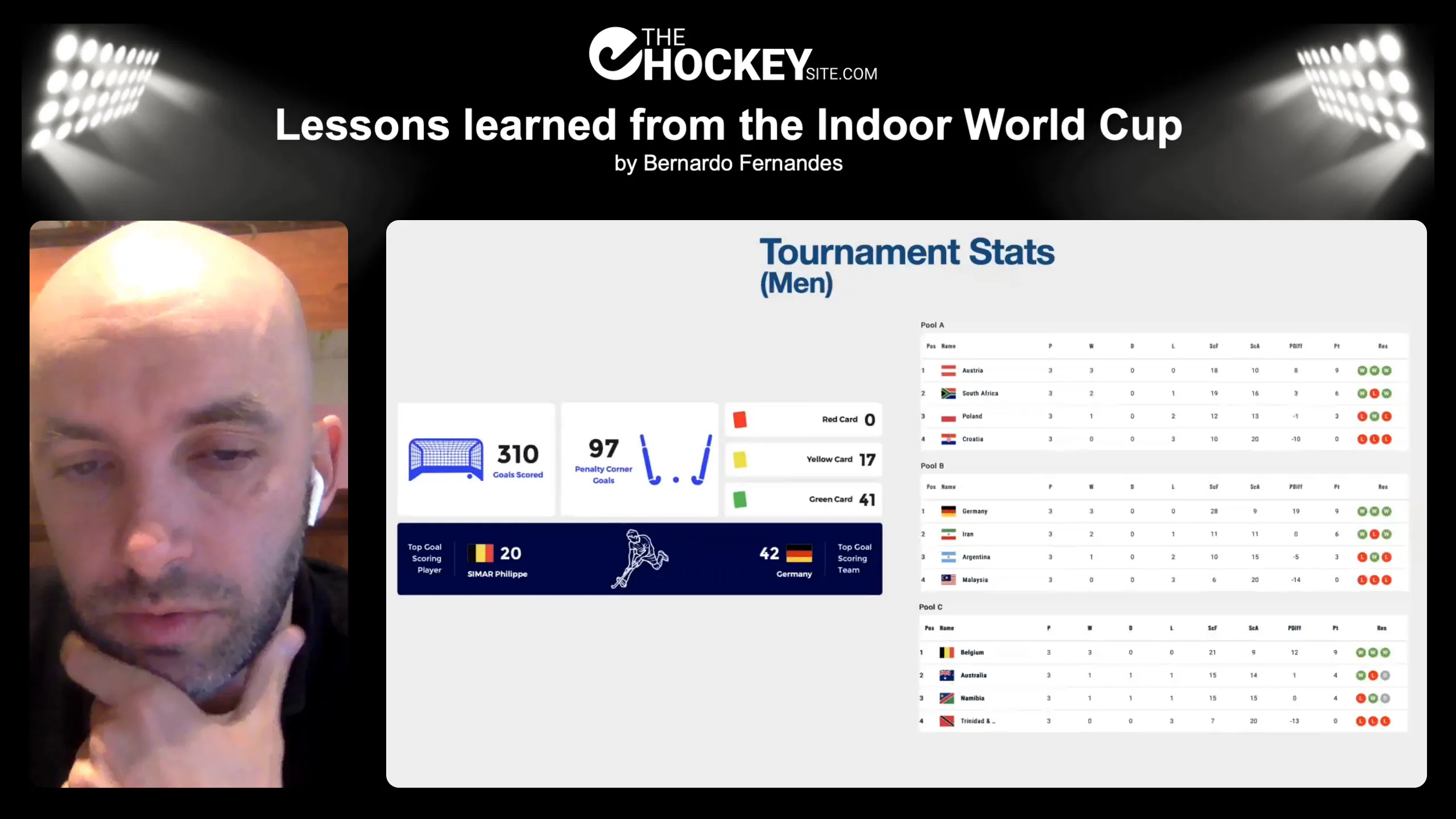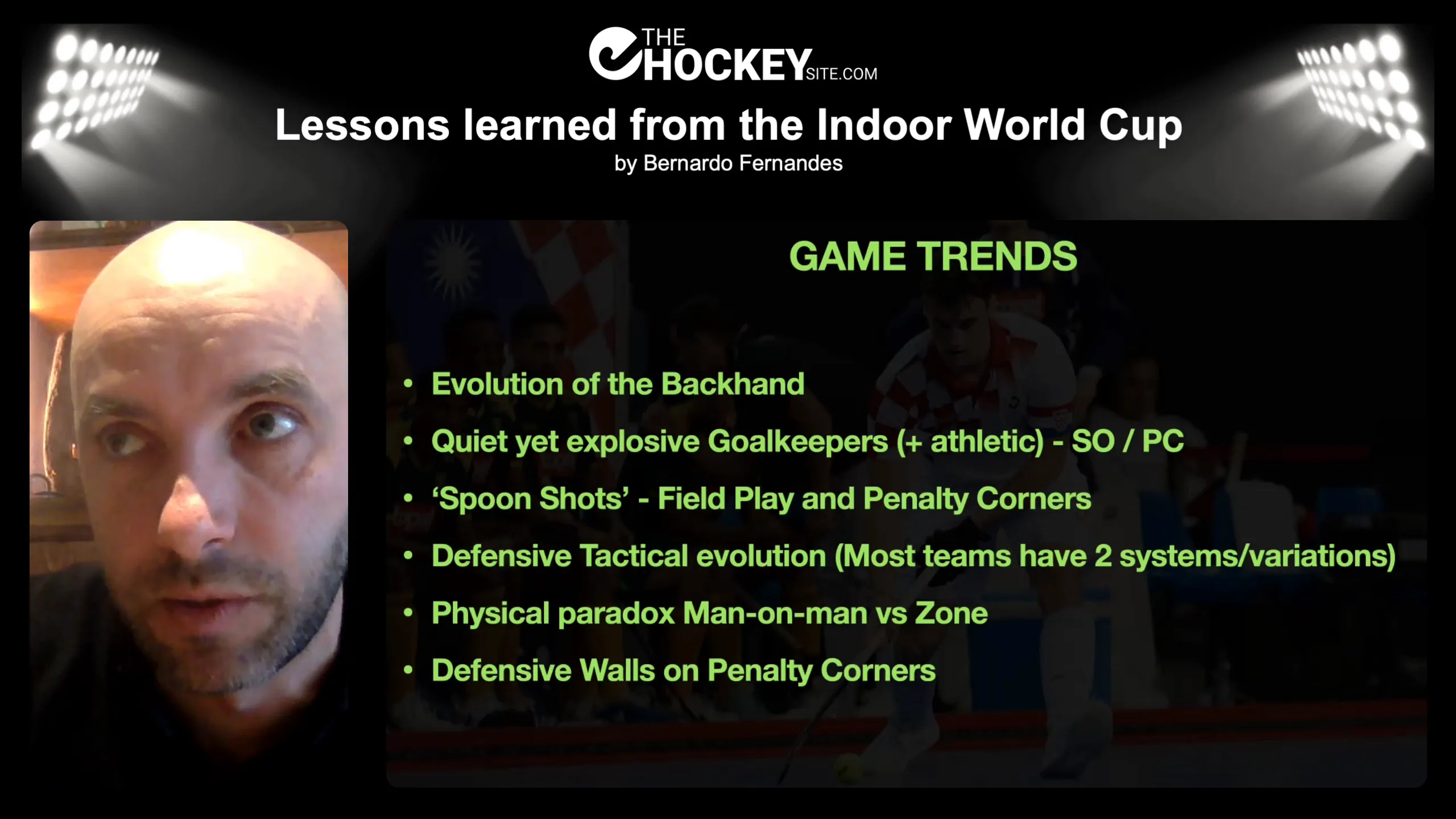In this masterclass, we dive deep into the world of indoor hockey, exploring valuable lessons learned from the recent Indoor Hockey World Cup. Join Bernardo Fernandes as he shares his experiences and insights, offering guidance for coaches looking to enhance their teams’ performance in this fast-paced and dynamic sport.
Indoor hockey is a thrilling variant of the traditional outdoor game, offering a fast-paced, dynamic environment that challenges players and coaches alike. The recent Indoor Hockey World Cup showcased not only the intensity of competition but also the unique strategies that define this sport. As a coach, understanding the nuances of indoor hockey can provide invaluable insights into team performance and game management.
My experience with the Croatian coaching staff during the World Cup was an eye-opening journey. It was a chance to witness firsthand the dedication, preparation, and passion that goes into competing at such a high level. The lessons learned extend beyond mere tactics; they encompass the emotional and psychological aspects that contribute to a team’s success.
The Indoor World Cup is a prestigious event that brings together the best teams from across the globe. This year’s tournament, hosted in Croatia, was particularly notable for its organizational excellence and the spirit of competition it fostered. The event not only highlighted the skills of individual players but also the collaborative efforts of coaching staffs who meticulously prepare their teams for success.

Throughout the tournament, the atmosphere was electric. Fans cheered passionately for their teams, and the players responded with skillful displays of hockey. The level of play was exceptional, with teams demonstrating both individual brilliance and cohesive teamwork. As coaches, we gathered insights that will inform our future strategies and player development.
Analyzing the tournament statistics reveals a clear trend: European teams dominated the competition. In both the men’s and women’s divisions, European nations consistently ranked at the top, showcasing their strength and depth in indoor hockey. This pattern underscores the importance of developing a robust hockey culture and infrastructure in these regions.

These statistics not only reflect the current state of indoor hockey but also serve as a benchmark for developing nations aiming to compete on the world stage. The challenge for emerging teams lies in building a competitive environment that nurtures talent and fosters a love for the game.
The rules governing indoor hockey play a significant role in shaping the game’s dynamics. Recent changes, such as those concerning trapping and penalty corner defense, have sparked discussions among coaches and players alike. Understanding these rules is crucial for developing effective game strategies.

As coaches, we must adapt our tactics to these rules while ensuring our players are well-versed in the regulations. This adaptability can be the difference between success and failure in high-stakes matches.
Preparation for the Indoor World Cup was an extensive process for the Croatian team. We focused on creating a comprehensive game plan that addressed both our strengths and the unique challenges posed by our opponents. This involved detailed analyses of potential competitors, particularly South Africa, which we had the opportunity to study closely.
Our game preparation included:
By emphasizing teamwork and communication during our preparation, we aimed to foster an environment where players felt confident in executing the game plan. The success of this approach became evident as the tournament progressed.
The Indoor Hockey World Cup revealed several emerging trends that are shaping the future of the sport. Notably, the evolution of backhand techniques and innovative shot styles are becoming increasingly prominent in players’ arsenals.
These trends not only enhance the excitement of the game but also provide coaches with new avenues for player development. Adapting training programs to incorporate these techniques can elevate a team’s performance on the international stage.
Defensive strategies in indoor hockey are evolving, with teams now employing a mix of zone and man-to-man systems. This adaptability is essential in responding to the dynamic nature of indoor play, where quick transitions and momentum shifts are commonplace.

Coaches must also consider the physical demands of these strategies:
Understanding these physical demands allows coaches to create training regimens that prepare players for the rigors of indoor hockey, ensuring they remain competitive throughout the tournament.
The Indoor Hockey World Cup was a platform for showcasing remarkable goals and innovative techniques. Players exhibited a variety of skills that captivated audiences and left a lasting impression on coaches and spectators alike.
One standout moment was the execution of backhand shots, which have become increasingly popular in indoor hockey. These shots not only demonstrate a player’s skill but also their ability to think creatively under pressure.
In addition to backhand shots, the tournament featured several instances of “rolling shots,” where players skillfully maneuvered the ball to evade defenders. This technique highlights the importance of ball control and quick thinking during gameplay.
Teams like South Africa embraced a more attacking style, often opting for bold plays that resulted in thrilling goals. Their willingness to take risks paid off, showcasing how creativity can lead to success on the field.
As coaches, we must extract valuable lessons from the Indoor Hockey World Cup. Here are three key takeaways that can enhance our training methodologies:

Goalkeepers play a more active role in indoor hockey compared to outdoor formats. Their ability to read the game and react quickly is paramount. During the tournament, we saw how top goalkeepers became game-changers in shootouts and critical moments.
Training for goalkeepers should include:
Player development is a continuous process, and the lessons learned from the World Cup emphasize the need for targeted training. Coaches should focus on building a strong foundation of skills while also adapting to the evolving styles of play.
Key aspects of training include:
The Indoor Hockey World Cup has showcased the sport’s potential for growth and excitement. As coaches, we have a responsibility to nurture this talent and inspire the next generation of players.
By embracing creativity, refining our training approaches, and recognizing the importance of player development, we can elevate indoor hockey to new heights. The future is bright, and with continued effort, we can make indoor hockey a prominent force in the global sports arena.
Russell Coates designed a new practice session on indoor defensive structures for indoor hockey. By now you’re too late to join us live to get your questions in and together build that practice session. To watch the full on demand video replay afterwards, you need to be a paid subscriber… Watch it here ↓
Or check out different options to watch our on demand content here

An experienced coach, trainer and technical director in The Netherlands, Russell Coates 🇳🇱 founded hockeyplatform.nl where he shares his drills and practice sessions with clubs and academies. Russell and thehockeysite.com decided to work together and bring a monthly workshop in which he will build and share a full practice session together with you. Each session will focus on one particular topic.
On Friday December 20, 2024 we talked about training for indoor offensive structures. This time we’ll talk defensive structures.
As usual if you join one of our live sessions live it’s free, if you want to watch it afterwards on demand, you need to be a member.
Afterwards the on demand video will also be available in our XPS app. In case you don’t want to miss out on future masterclasses, make sure you join us as a free or paid member so we can send you our reminders whenever we go live…